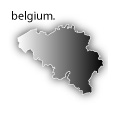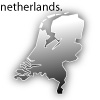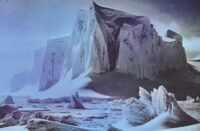
>>> Key
::..:::…..:..::….:::::..:::..:::::::……:::…::.:::….::::..:..:::…::…….::::
 :: The latest incarnation of Sweden’s Andreas Tilliander (Mille Plateaux, Raster Noton, Ideal) is set far apart than much of his earlier work. The pristine dark nature to the way in which this Album grows is speculative with a wild sense of authority. Broken into seven untitled parts, Mokira’s sound here is a play on warm tones and chilly glitches. Comprised of loops and pops that evenly blend the weight and structures heard in works by fellow composers Noto and Pole. The low-fi hiss of whitenoise static is shallow and fierce. Granulated peppershaker percussion livens the embodiment of a new organic in digital music. Tilliander’s signature could is made from an absence of anything outside of the mechanical world, his world is feasibly one of the most lushly un-fabricated sounding planets you may ever visit. Stimulating cellular increments of structured mathematical sound slices are layered and aurally airbrushed to a perfect matte finish. The awkward minimalist soundscape is crystal clear with faded hues of grey-blue harmonies and patchy sparks of a needle to the record – it’s post click-cut. The head gets lost in the meandering mix, like a steam mist evaporating into the atmosphere. Resampling a repetitive non-sense vocal Mokira designs a soft chant over a would-be beat driven cascade of other bubbly sounds that is stunted and a bit dry. The end result is stubbly, textural and tranquil. Incorporating a bit of industrial scratchiness Tilliander shapes the final minutes of one of my favorite recordings this year with an antidote to an extremely ambiguous dialogue in microgroove.
:: The latest incarnation of Sweden’s Andreas Tilliander (Mille Plateaux, Raster Noton, Ideal) is set far apart than much of his earlier work. The pristine dark nature to the way in which this Album grows is speculative with a wild sense of authority. Broken into seven untitled parts, Mokira’s sound here is a play on warm tones and chilly glitches. Comprised of loops and pops that evenly blend the weight and structures heard in works by fellow composers Noto and Pole. The low-fi hiss of whitenoise static is shallow and fierce. Granulated peppershaker percussion livens the embodiment of a new organic in digital music. Tilliander’s signature could is made from an absence of anything outside of the mechanical world, his world is feasibly one of the most lushly un-fabricated sounding planets you may ever visit. Stimulating cellular increments of structured mathematical sound slices are layered and aurally airbrushed to a perfect matte finish. The awkward minimalist soundscape is crystal clear with faded hues of grey-blue harmonies and patchy sparks of a needle to the record – it’s post click-cut. The head gets lost in the meandering mix, like a steam mist evaporating into the atmosphere. Resampling a repetitive non-sense vocal Mokira designs a soft chant over a would-be beat driven cascade of other bubbly sounds that is stunted and a bit dry. The end result is stubbly, textural and tranquil. Incorporating a bit of industrial scratchiness Tilliander shapes the final minutes of one of my favorite recordings this year with an antidote to an extremely ambiguous dialogue in microgroove.
::..:::…..:..::….:::::..:::..:::::::……:::…::.:::….::::..:..:::…::…….::::
 :: Jeff Surak (autoharp) and Frans de Waard (guitar) collaborate to create a hybrid hum that pulses like ultra violet light with a red filter. The two tracks lengthy tracks here run at a total of about twenty minutes with “Jubilent Horde” as a decadent feast for the industrial heart. The warped ringing reel of its central sound drags and droops. Sounds like the halo of a fast moving train, or the hyper amplification of a nucleus. The x-rayed broken earth cover art is beautifully organic and illustrates this composition well. Track two, “Square_is_Mobbed” gives these two a bit more room to spread their sound a bit wider, opens up, breaks water. If you were to dance on the outer ring of Jupiter it may sound like this. A bent, metallic glint with just a hint of backing percussion that sounds like a china cabinet during an earthquake, but is most likely the macro shake of guitar strings moving in space. A calming atonal balance between blur and hum.
:: Jeff Surak (autoharp) and Frans de Waard (guitar) collaborate to create a hybrid hum that pulses like ultra violet light with a red filter. The two tracks lengthy tracks here run at a total of about twenty minutes with “Jubilent Horde” as a decadent feast for the industrial heart. The warped ringing reel of its central sound drags and droops. Sounds like the halo of a fast moving train, or the hyper amplification of a nucleus. The x-rayed broken earth cover art is beautifully organic and illustrates this composition well. Track two, “Square_is_Mobbed” gives these two a bit more room to spread their sound a bit wider, opens up, breaks water. If you were to dance on the outer ring of Jupiter it may sound like this. A bent, metallic glint with just a hint of backing percussion that sounds like a china cabinet during an earthquake, but is most likely the macro shake of guitar strings moving in space. A calming atonal balance between blur and hum.
::..:::…..:..::….:::::..:::..:::::::……:::…::.:::….::::..:..:::…::…….::::
 :: In the most elaborate and particular packaging (with separate image cards, die cuts and accordion-fold demographic texts) of any release over the last year, the newest addition to the Hafler Trio recent prolific arsenal is H3O label Phonometrography’s How To Slice A Loaf of Bread in a hand-numbered edition of 500. Three full discs of sonic loss of self-consciousness. On disc one (all discs just shy of one hour), the drone ghouls, the ambiguous creature folk, the haunted fog are all cautiously levitating above common perception. The profane poetry of Andrew McKenzie lives and breaths like a garish misanthrope teeming with dark rites of passage to initiate ’til death do we part. Yes, it is a bit of gothic ambience with plenty of encaustic silence. The vibration warps your inner ear. If you fast, this may be your fuel. Disc two opens with sacred drone of respect and remorse. This startles contemplation in its single industrial line across the page, shifting with the barest quartz accuracy. The philosophically articulate, albeit distancing cryptic idiom spoken here forth by Hafler Trio is derived from the essence of its past, but reflected only in its improvisational altitude. Becoming a hapless imitation, rendering a chamber orchestra put on hold. Disc three draws from a deeper, changing roto-rhythm. It pulses and transforms in color by shifting its minutiae in, out, around the back –an experiment in 0s and 1s with unlimited possibilities, and no true end result. The elusive mystery continues.
:: In the most elaborate and particular packaging (with separate image cards, die cuts and accordion-fold demographic texts) of any release over the last year, the newest addition to the Hafler Trio recent prolific arsenal is H3O label Phonometrography’s How To Slice A Loaf of Bread in a hand-numbered edition of 500. Three full discs of sonic loss of self-consciousness. On disc one (all discs just shy of one hour), the drone ghouls, the ambiguous creature folk, the haunted fog are all cautiously levitating above common perception. The profane poetry of Andrew McKenzie lives and breaths like a garish misanthrope teeming with dark rites of passage to initiate ’til death do we part. Yes, it is a bit of gothic ambience with plenty of encaustic silence. The vibration warps your inner ear. If you fast, this may be your fuel. Disc two opens with sacred drone of respect and remorse. This startles contemplation in its single industrial line across the page, shifting with the barest quartz accuracy. The philosophically articulate, albeit distancing cryptic idiom spoken here forth by Hafler Trio is derived from the essence of its past, but reflected only in its improvisational altitude. Becoming a hapless imitation, rendering a chamber orchestra put on hold. Disc three draws from a deeper, changing roto-rhythm. It pulses and transforms in color by shifting its minutiae in, out, around the back –an experiment in 0s and 1s with unlimited possibilities, and no true end result. The elusive mystery continues.
::..:::…..:..::….:::::..:::..:::::::……:::…::.:::….::::..:..:::…::…….::::
 :: Xela (John Twells) brought the world the very original sound of For Frosty Mornings… (Neo Ouija) last year. Now, teaming up with the people over at Berlin’s City Centre Offices he is about to explode all over the map. Starting up with the piano and guitar and happy-go-lucky vibe of “Softness of Senses” this twenty-something has a bright future. Twells is taking to a combo package of electronics and acoustic folk lines, when he composes songs about girls, clouds and smiles. The on-the-trails melody of “Smiles and Bridges” is almost sappy sweet, but something keeps things amber light, more like honey than saccharine ya know? Calling to mind themes from after school specials, holiday commercials and other blush producing giddiness, these smiles are wide. The title reflects the undoing and redoing of sound recycling, as made easy here by Xela. There’s a matter-of-factness about this record, not in a pouty way, as he caresses the soft, slightly sad rhythm on “You are in the Stars’ – perhaps an homage to a friend who’s passed? Getting the balance right Tangled Wool is one part post pop ambient electronica and three parts sheer soulful singer-songwriter styled thematic instrumentals. The quiet density of “Drawing Pictures of Girls” opens its hatch just barely to let out an elfin vocal that’s a bit shy, albeit mythical. In what could be a starry-eyed love call, the muted background makes it a pretty croon indeed. With analogous tones to those found throughout Bjork’s Verspertine, Xela sprinkles the magic about in the visionary “Through Crimson Clouds.” For all its harpsichord style panache the full-bodied track is something akin to a dreamy teenage campfire romp, toasted marshmallows and all. “So No Goodbyes” with its jet in the air and twee lining gives the palest impression of a poker-faced boardwalk pacer who’s just dropped his summer love off at the airport. Xela lies in a lonely hammock in a large field staring at the sky. People taking off every minute somewhere, loved ones hurled into the air, like a baby in a degenerative 16MM home movie.
:: Xela (John Twells) brought the world the very original sound of For Frosty Mornings… (Neo Ouija) last year. Now, teaming up with the people over at Berlin’s City Centre Offices he is about to explode all over the map. Starting up with the piano and guitar and happy-go-lucky vibe of “Softness of Senses” this twenty-something has a bright future. Twells is taking to a combo package of electronics and acoustic folk lines, when he composes songs about girls, clouds and smiles. The on-the-trails melody of “Smiles and Bridges” is almost sappy sweet, but something keeps things amber light, more like honey than saccharine ya know? Calling to mind themes from after school specials, holiday commercials and other blush producing giddiness, these smiles are wide. The title reflects the undoing and redoing of sound recycling, as made easy here by Xela. There’s a matter-of-factness about this record, not in a pouty way, as he caresses the soft, slightly sad rhythm on “You are in the Stars’ – perhaps an homage to a friend who’s passed? Getting the balance right Tangled Wool is one part post pop ambient electronica and three parts sheer soulful singer-songwriter styled thematic instrumentals. The quiet density of “Drawing Pictures of Girls” opens its hatch just barely to let out an elfin vocal that’s a bit shy, albeit mythical. In what could be a starry-eyed love call, the muted background makes it a pretty croon indeed. With analogous tones to those found throughout Bjork’s Verspertine, Xela sprinkles the magic about in the visionary “Through Crimson Clouds.” For all its harpsichord style panache the full-bodied track is something akin to a dreamy teenage campfire romp, toasted marshmallows and all. “So No Goodbyes” with its jet in the air and twee lining gives the palest impression of a poker-faced boardwalk pacer who’s just dropped his summer love off at the airport. Xela lies in a lonely hammock in a large field staring at the sky. People taking off every minute somewhere, loved ones hurled into the air, like a baby in a degenerative 16MM home movie.
::..:::…..:..::….:::::..:::..:::::::……:::…::.:::….::::..:..:::…::…….::::
 :: Coelacanth (Loren Chasse & Jim Haynes) process through a drone of fire and a vortex of fear on their recording “ud Wall. Taking the name of a prehistoric fossilized fish, this is 40-minutes that absorbs an air of dense, viscous, soft grains. By treating a live performance from 2002, the duo has essentially reinterpreted the improvisation, opting for highlights that mutate gently with industrial vibration. Scraping the ocean floor, pouring static and other random metallic percussion play draw attention to the inner organics of this long player. Mud Wall is like a series of shaded memoirs, those moments in between… sitting on a plane awaiting your turn to hit the skies, waking in the middle of the night sandwiched between dreams, anesthesia… By using objects to create rolling, scuffing and otherwise fidgety smaller actions they have amplified part of their inner workings. More concrete than ambient, this is a leap for Mystery Sea, whose works often induce slumber – Mud Wall is complex listening that keeps you at the edge, through its raw core, and diffuse obscurity. A means to an invented world without end.
:: Coelacanth (Loren Chasse & Jim Haynes) process through a drone of fire and a vortex of fear on their recording “ud Wall. Taking the name of a prehistoric fossilized fish, this is 40-minutes that absorbs an air of dense, viscous, soft grains. By treating a live performance from 2002, the duo has essentially reinterpreted the improvisation, opting for highlights that mutate gently with industrial vibration. Scraping the ocean floor, pouring static and other random metallic percussion play draw attention to the inner organics of this long player. Mud Wall is like a series of shaded memoirs, those moments in between… sitting on a plane awaiting your turn to hit the skies, waking in the middle of the night sandwiched between dreams, anesthesia… By using objects to create rolling, scuffing and otherwise fidgety smaller actions they have amplified part of their inner workings. More concrete than ambient, this is a leap for Mystery Sea, whose works often induce slumber – Mud Wall is complex listening that keeps you at the edge, through its raw core, and diffuse obscurity. A means to an invented world without end.
::..:::…..:..::….:::::..:::..:::::::……:::…::.:::….::::..:..:::…::…….::::
 :: Mike Palace is Horchata and his lethargic “Somatic” shoots from nerve endings in the hip. The cassette-fi of “Conidia” lends to a somewhat homemade flavor rendered and blended slowly to get all the goodness from top to bottom. The drum machine is a bit outdated, so he douses it with plenty of fuzzbox. But it’s still a bit too pensive for me, it wants to build, grow, expand but keeps to a gamelan sort of aesthetic. Now that I ask, the big footed beat comes down on “Cyst.” The rendering, decelerated, but still keeps time with the other sparse, glitchy electronics. One step at a time, and then another… it must be the het of Summer that regulates the roll here. The micro hip-hop of “Saprobe” sounds like a slowed down “All is Full of Love” believe it or not. Palace is vocoded beyond recognition, it’s more like a bike chain. The magical creaky world that is made-up of “Mychorrhizae” is both chilling and warm. It’s a preface to something that never starts, really – like a cliffhanger in mid-air, no physical ground beneath you but somehow you are just out there, dangling. Twine steps in to remix the buzzing “Peridium” and uses a side-step beat that is half funky, half postdated to start with and then its all broken in back beats, coasting austerity, with a bust out caustic ping-pongy symphonic processional. Yeah, it’s like that. They tweak the sky, juice the flowers and by all means necessary distort the ultimate possibilities of where a mix rises and falls. It’s last minute reminds me of some of the finest moments on Terre Thaemlitz’s “Couture Cosmetique.” As Horchata close out Basidia with the chunky ambience of “Gleba” it acts like a halo effect, with extensive rings in cool spectral shades that fade away as the edges recede into night.
:: Mike Palace is Horchata and his lethargic “Somatic” shoots from nerve endings in the hip. The cassette-fi of “Conidia” lends to a somewhat homemade flavor rendered and blended slowly to get all the goodness from top to bottom. The drum machine is a bit outdated, so he douses it with plenty of fuzzbox. But it’s still a bit too pensive for me, it wants to build, grow, expand but keeps to a gamelan sort of aesthetic. Now that I ask, the big footed beat comes down on “Cyst.” The rendering, decelerated, but still keeps time with the other sparse, glitchy electronics. One step at a time, and then another… it must be the het of Summer that regulates the roll here. The micro hip-hop of “Saprobe” sounds like a slowed down “All is Full of Love” believe it or not. Palace is vocoded beyond recognition, it’s more like a bike chain. The magical creaky world that is made-up of “Mychorrhizae” is both chilling and warm. It’s a preface to something that never starts, really – like a cliffhanger in mid-air, no physical ground beneath you but somehow you are just out there, dangling. Twine steps in to remix the buzzing “Peridium” and uses a side-step beat that is half funky, half postdated to start with and then its all broken in back beats, coasting austerity, with a bust out caustic ping-pongy symphonic processional. Yeah, it’s like that. They tweak the sky, juice the flowers and by all means necessary distort the ultimate possibilities of where a mix rises and falls. It’s last minute reminds me of some of the finest moments on Terre Thaemlitz’s “Couture Cosmetique.” As Horchata close out Basidia with the chunky ambience of “Gleba” it acts like a halo effect, with extensive rings in cool spectral shades that fade away as the edges recede into night.
::..:::…..:..::….:::::..:::..:::::::……:::…::.:::….::::..:..:::…::…….::::
 :: The sounds ringing in your ears are filtered sinewaves that are tuning fork pitch perfect. The most current z_e_l_l_e (Nicola Catalano, Maurizio Martusciello), rjctd::nw, was recorded between 2000-01 in Rome and parts are like the end reel of a film still spinning sans projectionist. Yet, when reminded each day I step into most urban settings to hear the motors and warnings of dump trucks and cranes backing up, changing gears and directives, this recording becomes a kinder, gentler lullaby of such gestures. Embodying the guise of what makes up the term microsound, the Italian duo strip down sound to its finest, sheerest elements, maybe even molecular structures. After a great debut on Line’s nth they seem to have only taken their sound further down a warm path patterned by dissonant bright dots and sparkling minimalism. z_e_l_l_e’s work is sketchy and encoded, sparse and meditative. The science of sprite noise is modulated by startlingly minuscule tonal experiments. In the end, a colony of digitized crickets surround and otherwise cordon off a hypersensitive bionetwork.
:: The sounds ringing in your ears are filtered sinewaves that are tuning fork pitch perfect. The most current z_e_l_l_e (Nicola Catalano, Maurizio Martusciello), rjctd::nw, was recorded between 2000-01 in Rome and parts are like the end reel of a film still spinning sans projectionist. Yet, when reminded each day I step into most urban settings to hear the motors and warnings of dump trucks and cranes backing up, changing gears and directives, this recording becomes a kinder, gentler lullaby of such gestures. Embodying the guise of what makes up the term microsound, the Italian duo strip down sound to its finest, sheerest elements, maybe even molecular structures. After a great debut on Line’s nth they seem to have only taken their sound further down a warm path patterned by dissonant bright dots and sparkling minimalism. z_e_l_l_e’s work is sketchy and encoded, sparse and meditative. The science of sprite noise is modulated by startlingly minuscule tonal experiments. In the end, a colony of digitized crickets surround and otherwise cordon off a hypersensitive bionetwork.
::..:::…..:..::….:::::..:::..:::::::……:::…::.:::….::::..:..:::…::…….::::
 :: The wet, static rain, combining digital and other field recordings attempts to reconstruct “Vier Stukken” by Kapotte Muziek (Frans De Waard). Toshiya Tsunoda (Sirr, Intransitive, Lucky Kitchen) brings together some deep conceptualism to this work. Recorded in Nagaura Bay, Japan, Tsunoda captures the primal frequency of the shoreline, the anchor’s chains, the stillness of the water’s calm with a random gull, general marine industry. Though, if you step outside of the known sound you hear distinctive metals, percussion via churning bubbles and a drone that could be either the well worn tracks with a distant, passing steam locomotive or an elongated cry for help. You know that sound when you have reached the bottom of a favorite drink? Sucking endlessly through a straw you attempt to savor the very last drop, all expectations high that the serving will last forever. This exaggerated anticipation is built tenfold here with a series of velocity shifts, and some added chirps and slight melodies implanted in the background. This is the eleventh in an ongoing series that matches composers with the back catalogue of work by KM which also includes renditions by Stephan Mathieu, Raboud Mens and others. In conclusion, Tsunoda brings us back to the coast, with big (jetliner passing overhead) and lil’ birdcalls. The combination of nature and industrial stillness (and chaotic frenzy) is a complex, difficult listen; it’s tension mirroring the way of the twenty-first century world.
:: The wet, static rain, combining digital and other field recordings attempts to reconstruct “Vier Stukken” by Kapotte Muziek (Frans De Waard). Toshiya Tsunoda (Sirr, Intransitive, Lucky Kitchen) brings together some deep conceptualism to this work. Recorded in Nagaura Bay, Japan, Tsunoda captures the primal frequency of the shoreline, the anchor’s chains, the stillness of the water’s calm with a random gull, general marine industry. Though, if you step outside of the known sound you hear distinctive metals, percussion via churning bubbles and a drone that could be either the well worn tracks with a distant, passing steam locomotive or an elongated cry for help. You know that sound when you have reached the bottom of a favorite drink? Sucking endlessly through a straw you attempt to savor the very last drop, all expectations high that the serving will last forever. This exaggerated anticipation is built tenfold here with a series of velocity shifts, and some added chirps and slight melodies implanted in the background. This is the eleventh in an ongoing series that matches composers with the back catalogue of work by KM which also includes renditions by Stephan Mathieu, Raboud Mens and others. In conclusion, Tsunoda brings us back to the coast, with big (jetliner passing overhead) and lil’ birdcalls. The combination of nature and industrial stillness (and chaotic frenzy) is a complex, difficult listen; it’s tension mirroring the way of the twenty-first century world.
::..:::…..:..::….:::::..:::..:::::::……:::…::.:::….::::..:..:::…::…….::::
 :: Dream is a quirky glitch-o-phonic oasis by these French twiddlers. Part deep dark experimentation, with a heaping topping of playful pops and 70s synths – just listen to “The Queller Drive.” Murky mono beats make “Twins’ Heaven” a deadpan undone pop prank, if it weren’t for the fortified grooves. By manipulating their guitars through both hard and software the blend adds a sci-fi pitch without an after bite and “Oblivion” attests to that. Though the mix is a bit hazy, it lends to the antique feel to its most modern character. There’s something in there, beyond the surface treble, which is amiss. “Spacefuzzdge” is like a Gap commercial on Mars. And “Bad Dreams Made of Cheap Plastic” sums it up in Saturday AM cartoon-style. Though there are several redeeming factors that make this less than a momentary foray into improvisational performance art – the story flows like a bad night’s rest, constantly interrupted, anxious, and frustrating. Not quite cinematic, with partial mix flux, and plenty of trial and error.
:: Dream is a quirky glitch-o-phonic oasis by these French twiddlers. Part deep dark experimentation, with a heaping topping of playful pops and 70s synths – just listen to “The Queller Drive.” Murky mono beats make “Twins’ Heaven” a deadpan undone pop prank, if it weren’t for the fortified grooves. By manipulating their guitars through both hard and software the blend adds a sci-fi pitch without an after bite and “Oblivion” attests to that. Though the mix is a bit hazy, it lends to the antique feel to its most modern character. There’s something in there, beyond the surface treble, which is amiss. “Spacefuzzdge” is like a Gap commercial on Mars. And “Bad Dreams Made of Cheap Plastic” sums it up in Saturday AM cartoon-style. Though there are several redeeming factors that make this less than a momentary foray into improvisational performance art – the story flows like a bad night’s rest, constantly interrupted, anxious, and frustrating. Not quite cinematic, with partial mix flux, and plenty of trial and error.
::..:::…..:..::….:::::..:::..:::::::……:::…::.:::….::::..:..:::…::…….::::
*FINLAND :: The shamanic trio of Anti Ittna H. (vocal, guitars, samples), R. Kadin and Iwo Hoccuc (percussion) unleash the first part of an upcoming trilogy of records. The demon cat is out of the bag for sure, in very solid tribal drumming and a lot of mystique. This is not your typical Goth rip-off. This hour plus piece, partly made for meditation (but might be better for bats), is quite charged with flares and other experimental drone and whirring cryptic antimatter. The very sparse caveman meets Dracula vocal is completely tonal, barely audible, just a part of the mix. The tracks melt into one another with an industrial mysticism. This also carries the weight of its atmosphere without sell-out rock hooks, and in some way might be informed by all of the second comings of Bauhaus and the like. The sequencers briskly build taffy-like layers of doom. And if you are into it you can probably read dozens of messages in the accompanying eight page booklet filled with occult style diagrams, shapes made in nature and in industry – a tangled, Escheresque web we weave…
::..:::…..:..::….:::::..:::..:::::::……:::…::.:::….::::..:..:::…::…….::::
 :: The latest collaboration between New York’s Seth Nehil and Chicago’s Olivia Block makes for a more intimate affair than their previous work, although maintains all the eccentric nuances of tiny organics and bursts of light that each artist brings to the table. Essentially broken into four parts and subsections thereof – the duo uses recordings composed between 1999-2001 with the occasional assistance of Kyle Bruckmann (oboe), Michael Northam (objects) and Michael Shannon (reeds). The piece opens with pops of generated white noise, some utterly unique molecular goings-on and fused wind instruments drifting only barely through. The wiggly melody acts like a spring of fish spawning in cascading glints of golden rays, or a mad violinist using scrimshaw to whittle his sidewards. The actual field recordings used here are from Kyoto’s train platforms, markets and other diminutive elements in Japan. The wooden percussion sounds Japanese somehow, sort of paced and neat – and the fan-belt drones make for an elusive sound, something incidental and improvised yet quite chilling actually. Their use of very fine coarse, undertones help keep your neck extended towards the speakers. Rusty parts and emanating gases tilt towards the more erudite side of my inner ear, where I am playing part in some type of textural short story. The romancing crackle of vinyl, and other alternating sounds are channeled the way you tend to hear while flying down the road at speeds over 60, you just catch quick hints of solid mass in the air as you whiz by, like only getting a part of the story. It’s like a live dada poem unfolding.
:: The latest collaboration between New York’s Seth Nehil and Chicago’s Olivia Block makes for a more intimate affair than their previous work, although maintains all the eccentric nuances of tiny organics and bursts of light that each artist brings to the table. Essentially broken into four parts and subsections thereof – the duo uses recordings composed between 1999-2001 with the occasional assistance of Kyle Bruckmann (oboe), Michael Northam (objects) and Michael Shannon (reeds). The piece opens with pops of generated white noise, some utterly unique molecular goings-on and fused wind instruments drifting only barely through. The wiggly melody acts like a spring of fish spawning in cascading glints of golden rays, or a mad violinist using scrimshaw to whittle his sidewards. The actual field recordings used here are from Kyoto’s train platforms, markets and other diminutive elements in Japan. The wooden percussion sounds Japanese somehow, sort of paced and neat – and the fan-belt drones make for an elusive sound, something incidental and improvised yet quite chilling actually. Their use of very fine coarse, undertones help keep your neck extended towards the speakers. Rusty parts and emanating gases tilt towards the more erudite side of my inner ear, where I am playing part in some type of textural short story. The romancing crackle of vinyl, and other alternating sounds are channeled the way you tend to hear while flying down the road at speeds over 60, you just catch quick hints of solid mass in the air as you whiz by, like only getting a part of the story. It’s like a live dada poem unfolding.
::..:::…..:..::….:::::..:::..:::::::……:::…::.:::….::::..:..:::…::…….::::
 :: Split into five tracks and ten remixes of them, Andrey Kiritchenko’s Bees & Honey is sort of an all-in-one look at the intimacy and activist sides of his work. On “Moonshine” he induces a static rainstorm that is preceded by a clever alteration of tonal modulations. Light, silky melodious curvature flanking both vibes and intermittent feedback make “Suntouch” that much more physically challenging. “Bees Scattered” is like a microfine sandpapering of a non-threatening hive, although it’s a bit shortened at a touch over two minutes. Although the follow-up “Hive” may act as a part two extending for nearly seven more minutes of jangly drone, more like a woven web of liquid rhythm at the consistency of burnt caramel. Sticky, gooey, slick. Acting almost as a glossy top sheet to the previous short passages, Kiritchenko paints it on in heavy, lush coats that melt and ooze smoothly together. As the mix stirs and churns in an aural counter-clockwise precision the pitch shifts to a low-fi shriek of metal on metal. Finally, the fourteen-minute closer, “Flowers and Fields,” starts to spring. With hypnotic acumen the room is belly-up in laser lights and surveillance, honing into the center of budding undergrowth. Rasping nodules and sirens speak and are silenced, the atmosphere grows dim, a cascade of clean whitenoise drifts eternally. The remixes kick off with Brian Lavelle’s “Hymenopteran” which incorporates some cricketety field recording that blurs starry skies. It’s a chamber of tweaked echoes and ocean waves.
:: Split into five tracks and ten remixes of them, Andrey Kiritchenko’s Bees & Honey is sort of an all-in-one look at the intimacy and activist sides of his work. On “Moonshine” he induces a static rainstorm that is preceded by a clever alteration of tonal modulations. Light, silky melodious curvature flanking both vibes and intermittent feedback make “Suntouch” that much more physically challenging. “Bees Scattered” is like a microfine sandpapering of a non-threatening hive, although it’s a bit shortened at a touch over two minutes. Although the follow-up “Hive” may act as a part two extending for nearly seven more minutes of jangly drone, more like a woven web of liquid rhythm at the consistency of burnt caramel. Sticky, gooey, slick. Acting almost as a glossy top sheet to the previous short passages, Kiritchenko paints it on in heavy, lush coats that melt and ooze smoothly together. As the mix stirs and churns in an aural counter-clockwise precision the pitch shifts to a low-fi shriek of metal on metal. Finally, the fourteen-minute closer, “Flowers and Fields,” starts to spring. With hypnotic acumen the room is belly-up in laser lights and surveillance, honing into the center of budding undergrowth. Rasping nodules and sirens speak and are silenced, the atmosphere grows dim, a cascade of clean whitenoise drifts eternally. The remixes kick off with Brian Lavelle’s “Hymenopteran” which incorporates some cricketety field recording that blurs starry skies. It’s a chamber of tweaked echoes and ocean waves.
Marcus Maeder’s take on “Suntouch” takes a sizzling shower and turns it into something out of a 50s sci-fi B-movie soundtrack, complete with warped reverberation and bouncing satellite channels. The Scannermx is Robin Rimbaud’s contribution to Bees & Honey and by using his signature spoken samples layered right atop each other it creates a cacophonous cell of containment. The synthesis of airport/advertising voices surfaces and shies away to a tickering ribbon of the beats caused by turntable needle input play. Violet’s “Woman with Splited Head with Tramway” is metallic, trifling with bells and whistles to a fault. The mix bursts wide open with the brusque collision of segregated percussion that plays on the equality of both atonal rhythm and sporadicism. The Moglass’ “Moontouch” is wildly ambient, haunted, irregularly dizzying. “Dead World” is Bay Area Kim Cascone’s offering, which asserts itself as a fizzling firecracker. Drills, pops and lightly abrasive static draw only mild attention to the foreground here. It’s like raised print, you don’t really know its there until you look at it from a different angle. Cray’s “Moonshinermx56” is a quintessential space transmission, intelligent life that grows and glows. This anxious mix of flapping glitch and shallow forming hum operates like the acoustics of light, only the essence of the spectrum pulses and shifts, no solid mass is formed. Also included are reworks by Freiband, Kotra and 833-45, rounding off the buzz and rip off Andrey Kiritchenko’s complex, living organism.
::..:::…..:..::….:::::..:::..:::::::……:::…::.:::….::::..:..:::…::…….::::
 :: From extremely delicate field recordings rendered by nature and captured by Hitoko Sakai, Frans de Waard (Beequeen, Kapotte Muziek) and taken under the editing and mixing creative wing of multimedia artist Roel Meelkop (Goem, THU20) while in Japan in 2001, Onkyo OK is a wasteland of miniature sound effects and low-level drone. Split into six discreet track sections, and infecting your ears with the fade in and out surrealism of the instant, these three blend in the awkward candor of fluorescence with undercurrents of backstage at a typical rock concert in any major city, but you’ll have to listen in real closely to catch any of that. It’s like a big old compactor with a digital faceplate on the fritz. The concave hiss of early morning in an open field brings geese, a fountain and a whole lotta primordial hiss. The sounds of industrial clatter circles inside my head(phones) but is with such fusion that beside for commenting on the daily warpath of life’s impossible balance nothing is clearly delineated in terms of discreet personal instances or happenings. It’s all blended together, like a tie-dyed ragdoll being shaken (not stirred). The home stretch of “Onkyo OK” provides a muffled static being dragged closer to the edge. It’s an arduous, wind-swept climb, building slowly like a plane taking flight in turbulance and sounding as though it is coming full force directly at you. What appear to be shutters engaged to hold back some of the pressure only partially prevent some of the perforated airflow through. The sink is sudden and the end is abridged.
:: From extremely delicate field recordings rendered by nature and captured by Hitoko Sakai, Frans de Waard (Beequeen, Kapotte Muziek) and taken under the editing and mixing creative wing of multimedia artist Roel Meelkop (Goem, THU20) while in Japan in 2001, Onkyo OK is a wasteland of miniature sound effects and low-level drone. Split into six discreet track sections, and infecting your ears with the fade in and out surrealism of the instant, these three blend in the awkward candor of fluorescence with undercurrents of backstage at a typical rock concert in any major city, but you’ll have to listen in real closely to catch any of that. It’s like a big old compactor with a digital faceplate on the fritz. The concave hiss of early morning in an open field brings geese, a fountain and a whole lotta primordial hiss. The sounds of industrial clatter circles inside my head(phones) but is with such fusion that beside for commenting on the daily warpath of life’s impossible balance nothing is clearly delineated in terms of discreet personal instances or happenings. It’s all blended together, like a tie-dyed ragdoll being shaken (not stirred). The home stretch of “Onkyo OK” provides a muffled static being dragged closer to the edge. It’s an arduous, wind-swept climb, building slowly like a plane taking flight in turbulance and sounding as though it is coming full force directly at you. What appear to be shutters engaged to hold back some of the pressure only partially prevent some of the perforated airflow through. The sink is sudden and the end is abridged.
::..:::…..:..::….:::::..:::..:::::::……:::…::.:::….::::..:..:::…::…….::::
 :: Code is the word. This CD-Rom mini CD includes four remixed tracks running around 13 minutes and a CD-Rom with software and a movie. The mixes include “Rotatron” by Frank Bretschneider (Raster-Noton, Mille Plateaux) that is certainly in the ilk of the best work you have heard from him in the past, warm glitch served slowly, repetitively. It’s pure clean, crisp sparkle. Steinbrüchel (Line, Synchron) brings the treble vibe of “Pas(s)t” to this table. It starts out as open space, and just a glint of electric dust, and sweeps with an ethereal tone that fades away quickly. “Postfabricatedmonomix” is Richard Chartier’s (3 Particles, Trente Oiseaux) contribution here. It is as though he has taken small magnets and metal elements to test in a white room. There is the sound of suction, attraction, a magnetic vibrance to the piece that is flush and intricate. In the end Stephan Mathieu’s “Physiocontrol © + (R) (advance, bar, beam, boom).” The piece starts out like technical difficulties in radio transmission and seems predicated on a sense of sort of syncopated balance. More like the capture of a bulky head wind than music, really.
:: Code is the word. This CD-Rom mini CD includes four remixed tracks running around 13 minutes and a CD-Rom with software and a movie. The mixes include “Rotatron” by Frank Bretschneider (Raster-Noton, Mille Plateaux) that is certainly in the ilk of the best work you have heard from him in the past, warm glitch served slowly, repetitively. It’s pure clean, crisp sparkle. Steinbrüchel (Line, Synchron) brings the treble vibe of “Pas(s)t” to this table. It starts out as open space, and just a glint of electric dust, and sweeps with an ethereal tone that fades away quickly. “Postfabricatedmonomix” is Richard Chartier’s (3 Particles, Trente Oiseaux) contribution here. It is as though he has taken small magnets and metal elements to test in a white room. There is the sound of suction, attraction, a magnetic vibrance to the piece that is flush and intricate. In the end Stephan Mathieu’s “Physiocontrol © + (R) (advance, bar, beam, boom).” The piece starts out like technical difficulties in radio transmission and seems predicated on a sense of sort of syncopated balance. More like the capture of a bulky head wind than music, really.
::..:::…..:..::….:::::..:::..:::::::……:::…::.:::….::::..:..:::…::…….::::
Essential Links ::
::..:::…..:..::….:::::..:::..:::::::……:::…::.:::….::::..:..:::…::…….::::
Read more Microview’s ::
::..:::…..:..::….:::::..:::..:::::::……:::…::.:::….::::..:..:::…::…….::::
*Note :: Graphic for this country not available at time of publication.






















